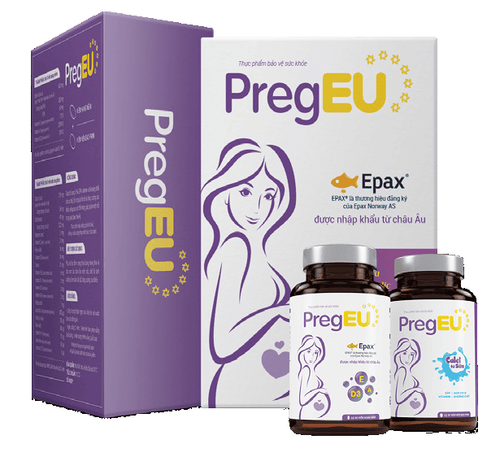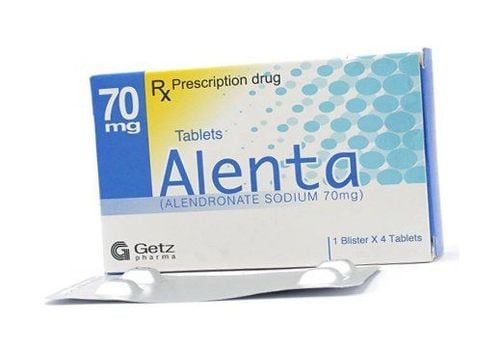This is an automatically translated article.
Calcium corbiere medicine 10ml, box of 30 tubes manufactured by Sanofi company - Vietnam contains the ingredients Calcium glucoheptonate, Nicotinamide and Ascorbic Acid. The drug works to treat calcium deficiency, people with high calcium needs and supports the treatment of osteoporosis due to many causes, calcium loss in the elderly...
1. Ingredients Calcium corbiere 10ml
Each 10ml Calcium corbiere oral tube contains the following ingredients:
Calcium glucoheptonate: 1,100g; Ascorbic acid : 0,100g; Nicotinamide: 0.050g; Excipients just enough: Sodium hydroxide, Acid hypophosphorus, fresh lemon tincture, succrose, purified water. 2. Calcium corbiere 10ml what effect? 2.1. Indications for the use of calcium corbiere 10ml medicine Calcium corbiere 10ml is indicated in the treatment of the following cases:
Calcium deficiency in the body, including: Rickets, inadequate daily dietary intake Essential calcium; Subjects needing high calcium requirements such as pregnant women, children in the developing stage, women who are breastfeeding, people recovering from a broken bone after a prolonged immobilization period; Calcium supplementation supports the treatment of osteoporosis due to various causes, prevents mineralization in pre- and post-menopausal stages, and supports the treatment and prevention of calcium loss in the elderly.
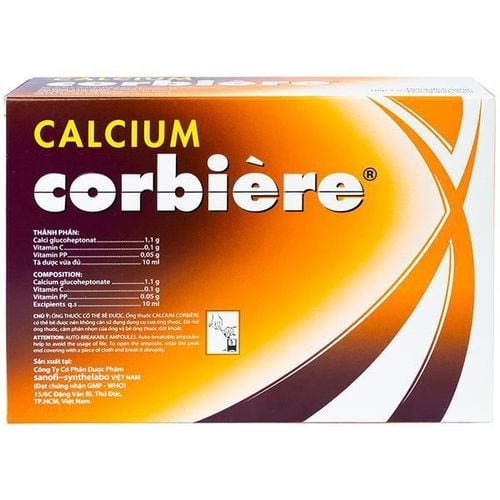
Thuốc Calcium corbiere 10ml
2.2. Pharmacokinetics of calcium corbiere 10ml The absorption of calcium in the body occurs mainly in the small intestine, through passive diffusion or active transport. Approximately 30% of calcium supplements are absorbed and absorption varies depending on the condition of the small intestine, diet and to some extent affected by the effects of vitamin D.
Unabsorbed calcium is eliminated through feces, bile and pancreatic juice; Excess calcium is excreted mainly by the kidneys. In addition, a small amount of calcium is eliminated through the skin, hair, sweat and nails. Calcium crosses the placental barrier and is distributed in breast milk. About 98% of calcium ions are reabsorbed into the tubular circulation, this reabsorption is influenced by parathyroid hormone (PTH) through a mechanism of action on the renal tubules.
Ascorbic acid is well absorbed and distributed to body tissues at a dose of 100 mg orally.
The combination of Vitamin PP in the preparation helps to increase the efficiency of calcium absorption in the gastrointestinal tract. Nicotinamide and nicotinic acid are rapidly absorbed from the gastrointestinal tract, widely distributed to tissues in the body. In addition, nicotinic acid is also present in breast milk. The metabolism of Vitamin PP is mainly to 2-pyridone, N-methylnicotinamide and 4-pyridone derivatives. Small amounts of Nicotinamide, nicotinic acid are excreted unchanged in the urine after therapeutic doses.
2.3. Pharmacodynamics calcium corbiere 10ml Calcium is an important extracellular divalent ion for the body. In normal people, women have about 1000g of calcium and men have about 1300g, of which 99% of calcium is distributed in bones as hydroxyapatite, the rest is in extracellular fluid and a very small amount in cells .
Plasma calcium concentration is about 8.5 mg - 10.4 mg/decilit (2.1 - 2.6 mmol), of which about 45% calcium is bound to plasma proteins (mainly Albumin) and about 10% forms complexes with other substances. Anionic buffer (eg Phosphate, Citrate).
The rest of the calcium in the body exists in the ionized form (Ca2+). This ion form is essential for biological processes, including: Release of neurotransmitters, excitation of neurons, muscle contractions, participation in blood clotting, secondary messenger for the action of many hormones.
On the neuromuscular system, calcium ion plays an important role in muscle excitation and contraction.
On the cardiovascular system, calcium ions play the role of stimulating and contracting the myocardium, participating in the conduction of electrical impulses on some areas of the myocardium, especially through the atrioventricular node.
On the skeletal system, calcium is the main component of bone structure, a necessary component for the process of newly established bone calcification. Therefore, calcium requirements are often higher in children, in the developmental stage, in pregnant women and in lactating women.
Ascorbic acid is a strong reducing agent. In the body, this compound plays an important role in the synthesis of collagen and intercellular components such as pre-skeletal tissue, connective tissue, dentin, etc. Besides, ascorbic acid is also an active ingredient. protective use of folic acid. Folic acid deficiency is common in children, the elderly, and alcoholics.
Nicotinamide in the body is converted into Nicotinamide adenin dinucleotide (NAD) or Nicotinamide adenine diuclotide phosphate (NADP) which are biologically active forms. NAD and NADP play an important role in metabolism, they act as a Coenzyme that catalyzes the oxidation-reduction reaction necessary for cellular respiration, lipid metabolism and glycolysis...
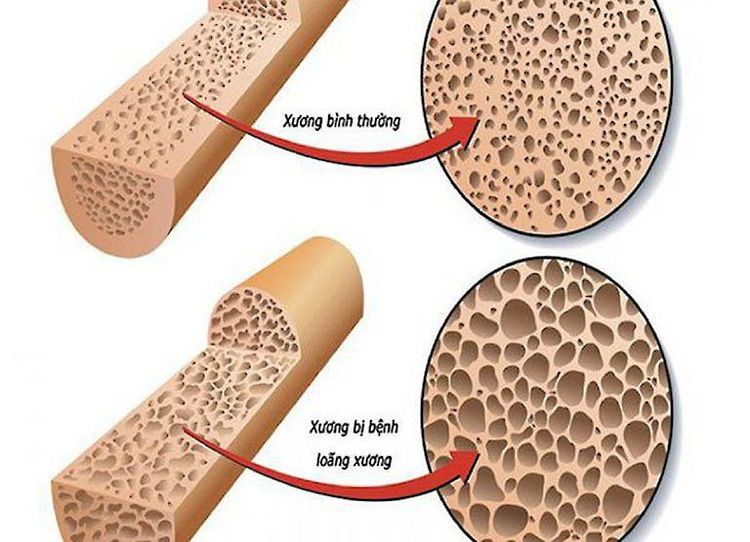
Thuốc Calcium corbiere 10ml được chỉ định trong điều trị thiếu Calci
3. Dosage of Calcium corbiere 10ml 3.1. How to take Calcium Corbiere 10ml effectively To use Calcium Corbiere 10ml, you need to break one end of the ampoule, then invert the ampoule, hold the ampoule upright on the glass, and break the other tip so that the medicine can pass. flow into the glass. Discard the vial after use.
3.2. Dosage of calcium corbiere 10ml How to use Calcium corbiere 10ml and should take Calcium corbiere before or after meals to achieve high efficiency? Accordingly, the dose depends on age, specifically as follows:
Children: Take 1 tube of 10ml per day in the morning; Adults: Drink 1-2 tubes of 10ml per day in the morning and afternoon. In the event of an overdose of the prescribed drug, how should it be handled? Doses of calcium provided greater than the recommended dose may lead to hypercalcemia, hyperphosphatemia, hypercalciuria, and lead to symptoms including nausea, vomiting, gastrointestinal disturbances, flushing of the face and neck, and sensations. burning, itching, stinging pain in the skin and muscle weakness... Therefore, in case of an overdose, stop taking it immediately and consult your doctor.
In case you miss a dose, take it as soon as possible. However, if it is almost time for your next dose, skip the missed dose and take your next dose as soon as possible. Care should be taken not to double the prescribed dose.
4. Side effects Some side effects (ADRs) that may be encountered when using Calcium corbiere 10ml are as follows:
Digestive disturbances, facial flushing, sharp pain in the skin, burning sensation... Effects Side effects caused by ascorbic acid: Common (incidence > 1/100): Increased urinary oxalate; Uncommon (1/1000 < ADR < 1/100): Hemolytic anemia, heart failure, facial flushing, headache, fatigue, dizziness, nausea, vomiting, diarrhea, heartburn... 5. Some notes when using calcium corbiere 10ml 5.1. Contraindicated to use Calcium corbiere 10ml Do not use 10ml Calcium corbiere in the following cases:
People who are sensitive to any ingredient of the drug; People with hypercalcemia, urinary calcium; People with bone-destroying melanoma; People with osteoporosis due to long-term immobility; Patients with kidney failure, heart failure; Do not use high doses of ascorbic acid in people with cirrhosis of the liver, excess acid, renal tubular acidosis, gout, paroxysmal nocturnal hemoglobinuria, patients with renal failure; Nicotinamide in calcium corbiere is contraindicated in patients with advanced peptic ulcer disease, severe liver disease, arterial bleeding, and severe hypotension.
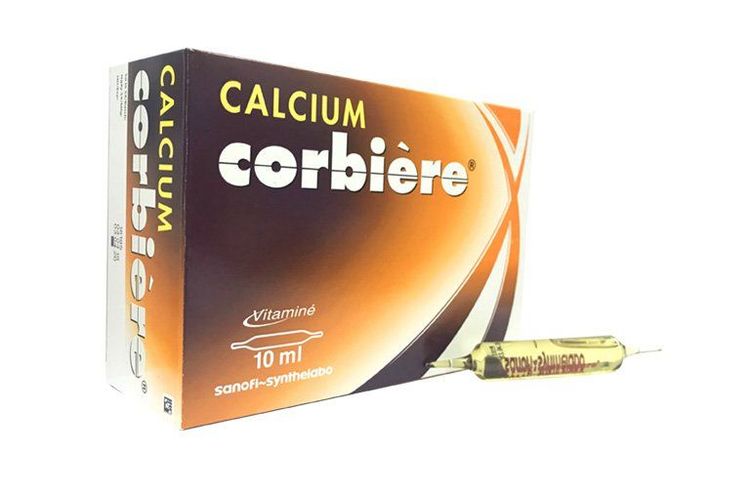
Một số trường hợp chống chỉ định sử dụng Calcium corbiere 10ml
5.2. Use with caution: Patients with mild hypercalciuria (>300mg or 7.5mmol/24 hours), patients with mild or moderate renal impairment, and patients with a history of urinary tract stones need to monitor calcium levels. excreted in the urine. In case it is necessary to reduce the dose or stop the drug treatment. Patients at high risk of urinary tract stones should drink plenty of fluids while taking this medicine.
With caution in patients with gallbladder disease, history of peptic ulcer, history of jaundice, liver disease, gouty arthritis or gout.
- Be careful with cancer patients, people with glucose-6 - phosphate dehydrogenase (G6PD) deficiency, kidney stones, anemia or sickle cell disease...
- Use caution when taking drugs for patients taking antibiotics, HIV drugs, anti-cancer agents, estrogen, barbiturates, people taking iron supplements...
- Diabetics need to be careful with the amount of sugar contained in Calcium corbiere ( 5g sugar/10ml tube).
5.3. Effects of the drug on special subjects - Machine operators, drivers: There is no evidence related to contraindications or caution for drivers, operating machines.
- Pregnant women: No harm when used in recommended doses. However, pregnant women should be supplemented with adequate calcium through the diet, using too much calcium and vitamins and minerals can be harmful to mother and fetus. Acis ascorbic, nicotinamide in supplemental doses according to the diet did not harm the mother or the fetus.
- Lactating women: There is no harm in taking at the recommended dose.
5.4. Drug interactions Interactions between Calcium corbiere and other drugs occur according to each component as follows:
- Calcium glucoheptonate:
Calcium is a decrease in absorption of some drugs such as tetracyclines, fluoroquinolones...so it must be taken away from other drugs. medicine for at least 3 hours; Corticosteroids reduce calcium absorption; Calcium corbiere 10ml reduces the response to Verapamil and other calcium channel blockers; Combined use of Calcium corbiere and Thiazide diuretics increases blood calcium. - Ascorbic acid (Vitamin C):
Using a combination of vitamin C and aspirin reduces the excretion of aspirin, increases the excretion of vitamin C in the urine; Concomitant administration of vitamin C and fluphenazine reduces fluphenazine plasma concentrations. Urine acidification after vitamin C ingestion may alter the excretion of other drugs; Vitamin C interferes with many tests because they are strong reducing agents. - Nicotinamide (Vitamin PP):
Concomitant use of Nicotinamide and statin drug groups increases the risk of myopathy or rhabdomyolysis; Nicotinamide reduces glucose tolerance and increases carbamazepine plasma concentrations. In summary, Calcium corbiere 10ml has the effect of treating calcium deficiency and supporting the treatment of a number of related diseases. To be effective and safe to use, patients should consult a doctor before use.
Please dial HOTLINE for more information or register for an appointment HERE. Download MyVinmec app to make appointments faster and to manage your bookings easily.






